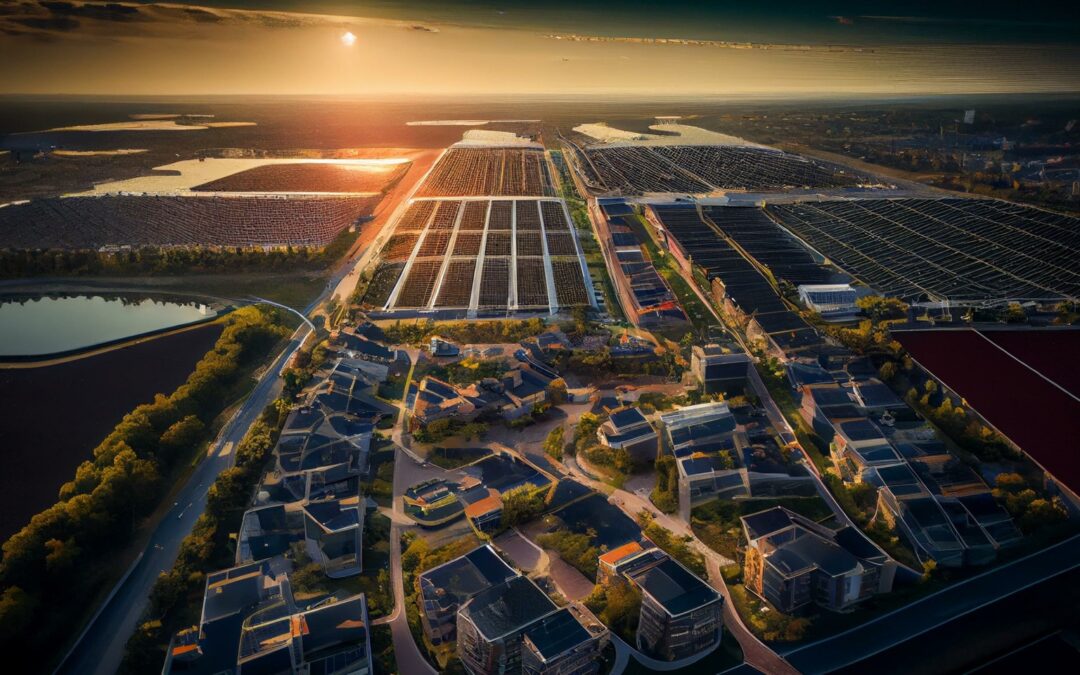District heating is becoming increasingly important throughout Europe for a secure and sustainable heat supply. The focus is shifting to modern third or fourth generation heating networks that are efficient and can be fed with renewable resources and waste heat.
The German government will also invest more in these technologies in future and wants to achieve the heating transition and climate protection targets by expanding district heating. Federal Minister for Economic Affairs and Climate Protection Robert Habeck and Federal Building Minister Klara Geywitz recently emphasized this at the district heating summit in Berlin on 12 June 2023.
Around 6.1 million homes across Germany were supplied with district heating in 2022. The share of renewable energies in district heating is currently around 20 percent. By 2030, however, half of the heat in local and district heating networks in Germany is to be generated in a climate-neutral way.
In particular, the implementation of so-called low-temperature networks, especially in urban areas, offers the possibility of supplying residential buildings and entire neighborhoods centrally and flexibly from renewable sources. One basis for the decarbonization of heating networks in Germany is currently the draft law on municipal heating planning. According to this, federal states and municipalities are to analyze their existing and planned heating networks in order to identify potential for a cost-efficient and climate-neutral supply. Based on this, plans for the future heat supply are to be drawn up.
District heating supply
In order to provide municipalities and their respective energy suppliers with more investment opportunities for grid expansion and the use of climate-neutral heat sources and heat storage systems, the German government launched the Federal Promotion of Efficient Heating Networks (BEW) in autumn 2022. This primarily supports the conversion of district heating to renewable energies. At the same time, corresponding funding programs, coupled with more planning security, are intended to supply a total of between 18 and 20 million homes with district heating by 2050.
District heating also plays an important role in Bavaria. However, there is potential for development, as only some large cities are currently supplied with district heating in some areas. In the state capital of Munich, one third of residents are connected to the local heating network. In Nuremberg and Erlangen the figure is 25 percent and in Augsburg and Würzburg around 20 percent.
The major Bavarian cities are planning to expand their heating networks in the future. Augsburg and Nuremberg want to supply up to 40 percent of their heating needs with local or district heating by 2040. In Munich, an even higher supply rate is possible due to the dense development. In addition, the heating network here is being converted to integrate geothermally generated heat. The climate-friendly expansion of the local and district heating infrastructure, i.e. the operation of low-temperature networks that are fed from renewable resources, is also the goal of other cities.
Energy efficiency with low-temperature networks
The sustainable and future-oriented expansion of fourth-generation district heating networks is currently occupying many European cities. The EU project “LowTEMP – Low Temperature District Heating for the Baltic Sea Region” initiated by aconium has dealt intensively with the planning, financing and installation of low-temperature district heating systems. They are characterized by the transfer of heat at a low temperature level in optimally insulated pipes. The comprehensive integration of renewable heat sources is only possible with the conversion of existing district heating systems to low flow and return temperatures and the simultaneous construction of these fourth-generation systems. “This is a particularly suitable solution for energy-efficient refurbishment of existing buildings or the construction of new districts.
More knowledge through online courses
How exactly is a district heating network structured and what European framework conditions exist in the area of sustainable heat supply? Based on the experiences and results of the EU LowTEMP project, three e-learning courses were developed as part of the LowTEMP 2.0 extension project. They enable municipal representatives responsible for energy issues, energy supply companies, energy agencies and planners as well as interested members of the public to learn more about district heating and low-temperature networks free of charge. The course content is intended to raise awareness of the importance and sustainable use of these heat supply systems. The e-learning courses are available in English and German on the LowTEMP website: https://www.lowtemp.eu/e-learning
The four generations of district heating systems
- Generation (ca. 1880-1930): Distribution of heat by steam via concrete pipes (proximity to the heat supplier)
- Generation (approx. 1930-1980): Hot water system (over 100 °C) with above-ground pressure pipes
- Generation (approx. 1980-2020): Insulated pipes, underground installation enables better energy efficiency and lower temperatures
- Generation (since approx. 2020): Intelligent heat supply system, greater energy efficiency, flow temperatures of 50-70 °C (so-called low-temperature district heating)

